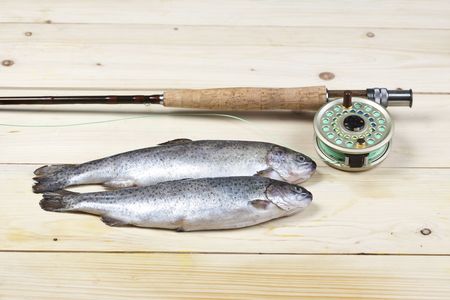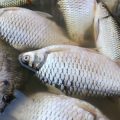1. How Cold Weather Impacts Fish Metabolism
As winter settles in across the United States, water temperatures drop—sometimes dramatically. For anglers and outdoor enthusiasts, understanding how these chilly conditions affect fish is key to having a successful day on the water. Let’s dive into how cold weather influences fish energy levels, feeding patterns, and overall metabolism.
Fish Are Cold-Blooded Creatures
Fish are ectothermic, or cold-blooded, meaning their body temperature changes with the environment. When the water gets colder, their bodily functions slow down. This shift has a big impact on how active they are and how often they eat.
Main Effects of Colder Water on Fish:
| Factor | Warm Water (Summer/Fall) | Cold Water (Winter) |
|---|---|---|
| Metabolism | Fast – fish are more energetic | Slow – fish conserve energy |
| Feeding Activity | Frequent – regular hunting for food | Infrequent – fewer meals needed |
| Movement | Active – roam larger areas | Lethargic – stick to deeper or sheltered spots |
Energy Levels Drop in Winter
When water temperatures dip below 50°F (10°C), most freshwater fish start conserving energy. Their heart rate slows, digestion takes longer, and they don’t need as many calories to survive. That’s why you might notice fish barely moving or staying in one place for long periods during the coldest months.
Why Does This Matter for Anglers?
If you’re out ice fishing or casting from shore during winter, keep in mind that fish aren’t actively chasing bait. They’re more likely to ignore fast-moving lures and instead respond better to smaller presentations worked slowly near the bottom where the water is a bit warmer. Understanding this biology can help you adjust your tactics and increase your chances of landing a catch even when it’s freezing outside.
2. Winter Habitats: Where Fish Go When It Gets Cold
As the temperatures drop and lakes, rivers, and ponds begin to chill, fish dont just stay put—they move to places where they feel safest and most comfortable. Understanding these winter habitats is key for any angler hoping to find success during the colder months.
Why Do Fish Move in Winter?
Fish are cold-blooded, which means their body temperature changes with the water around them. When winter arrives, fish look for areas that offer stable temperatures, protection from predators, and easy access to food. These spots often provide just enough warmth and shelter to help them survive until spring.
Common Winter Hideouts
Below is a quick guide to the types of underwater shelters and structures fish commonly seek out when it gets cold:
| Winter Habitat Type | Description | Why Fish Like It |
|---|---|---|
| Deep Holes | Pockets in lakes or rivers where the water is deeper than surrounding areas. | Deeper water stays warmer and more stable in temperature during winter. |
| Underwater Ledges & Drop-offs | Steep changes in depth near shorelines or in riverbeds. | Ledges offer quick escape routes from predators and access to different temperatures. |
| Submerged Logs & Brush Piles | Trees or branches that have fallen into the water. | These provide cover from predators and attract baitfish. |
| Rocky Bottoms | Areas with lots of rocks or boulders on the lake or riverbed. | Rocks absorb heat from sunlight and can create slightly warmer micro-habitats. |
| Vegetation Beds (if not frozen) | Patches of underwater plants that havent died off completely. | Plants offer oxygen, food, and cover even when it’s cold. |
The Importance of Depth in Winter Fishing
In many American lakes and reservoirs, fish like bass, crappie, walleye, and trout tend to move deeper as surface waters cool. You’ll often find them suspended off the bottom or near structure at depths where the temperature is more consistent. In smaller ponds, fish may cluster in whatever deep pocket they can find.
Pro Tip:
If you’re fishing through the ice or from a boat, use a fish finder or depth chart to locate these deeper areas—these tools can really make your day out on the water more productive!

3. Feeding Behavior in Chilly Waters
As winter settles in, the behavior of fish changes dramatically—especially when it comes to feeding. The cold water slows down their metabolism, making them much less active and selective about when and what they eat. Understanding these changes is key if you want to have a successful day on the water.
How Diet and Feeding Frequency Change
In warmer months, fish are generally more aggressive and feed frequently to keep up with their energy needs. But as the temperature drops, fish become sluggish and their need for food decreases. They may only eat once every few days or even less often. This means anglers need to be patient and strategic during winter fishing trips.
| Season | Feeding Frequency | Typical Diet |
|---|---|---|
| Spring/Summer | Multiple times per day | Insects, smaller fish, worms, crustaceans |
| Fall/Winter | Once every few days or less | Small prey, slow-moving bait, dead or dying fish |
Bait Selection for Winter Fishing
Bait choice becomes even more important when fish are less willing to chase down a meal. In chilly waters, fish prefer easy targets that require minimal effort to catch. Using live bait like minnows or nightcrawlers can be effective, but downsizing your lure or bait often makes a big difference. Slow-moving jigs and soft plastics that mimic injured prey tend to work well.
Popular Winter Baits in the U.S.
| Bait Type | Description | Best For |
|---|---|---|
| Minnows | Live or dead small fish that attract predators looking for easy meals. | Bass, Walleye, Pike |
| Nightcrawlers | A classic choice thats hard for most freshwater species to resist. | Panfish, Trout, Catfish |
| Soft Plastic Jigs | Mimic dying or injured baitfish; can be fished slowly along the bottom. | Crappie, Perch, Bass |
Tactics for Tempting Cautious Fish
The key in winter is subtlety. Fish are easily spooked by sudden movements or loud noises under the ice or in cold rivers and lakes. Use lighter line, smaller hooks, and present your bait as naturally as possible. Sometimes just letting your bait sit still for several minutes can make all the difference.
4. Adaptations to Survive Winter
When winter hits and lakes or rivers in the U.S. start to freeze, fish don’t just tough it out—they have some pretty cool tricks up their fins! Let’s dive into the unique biological adaptations and behaviors that help American freshwater fish survive icy conditions.
How Fish Beat the Cold
Unlike mammals, fish are cold-blooded, which means their body temperature matches the water around them. When temperatures drop, they slow down their metabolism to save energy. This helps them use less oxygen and food, which is super important when resources get scarce in winter.
Species-Specific Strategies
Not all fish handle winter the same way. Some species have special ways of surviving the chill:
| Fish Species | Main Adaptation | Winter Behavior |
|---|---|---|
| Largemouth Bass | Metabolic slowdown | Finds deeper, warmer water and becomes less active |
| Bluegill | Schooling up for warmth | Stays in groups near underwater structure |
| Northern Pike | Thick mucus coating | Remains solitary but hunts under ice cover |
| Trout (Rainbow/Brown) | Tolerance to low oxygen | Keeps feeding in cold streams with moving water |
| Walleye | Sensitive vision for low light | Feeds at dusk and dawn beneath ice sheets |
The Importance of Oxygen and Shelter
As lakes freeze over, oxygen levels can drop. Fish seek out areas with higher oxygen—often close to inflowing streams or where plants are still photosynthesizing under the ice. Many also look for shelter, like sunken logs or rocky bottoms, to stay safe from predators and conserve energy.
Bodies Built for Winter Survival
Certain physical features help too! Some fish develop a thicker slime layer on their skin in winter, which protects them from disease and helps retain moisture. Others have special enzymes that keep their bodily functions going even when it’s icy cold outside.
Key Takeaway: Survival is All About Adaptation!
No matter where you’re fishing—from frozen Minnesota lakes to flowing Appalachian streams—American freshwater fish show amazing resilience by adapting both physically and behaviorally to winter’s challenges.
5. Fishing Strategies for the Winter Angler
Adjusting Your Approach for Cold-Weather Fishing
Fishing in winter across America brings unique challenges, but understanding how fish behave in the cold can help you adapt and stay successful. As water temperatures drop, fish metabolism slows down and their feeding patterns change. You’ll need to adjust your tactics to match these seasonal shifts.
Key Tips for Winter Fishing Success
| Strategy | Description | Why It Works |
|---|---|---|
| Slow Down Your Presentation | Retrieve lures more slowly than in warmer months. | Fish are less active and prefer slower-moving bait. |
| Downsize Lures and Bait | Use smaller jigs, spoons, or live bait. | Smaller prey looks more natural when fish aren’t aggressively feeding. |
| Focus on Deep Water | Target deeper pools, holes, or drop-offs. | Fish often move to deeper, more stable water temperatures during winter. |
| Fish During Warmest Part of Day | Plan outings around midday or early afternoon. | Slight temperature increases can boost fish activity levels. |
| Use Light Line and Tackle | Select lighter line and sensitive rods. | Lighter gear helps detect subtle bites typical in cold weather. |
Lure Selection for American Winter Waters
The right lure makes a big difference when targeting winter species like bass, walleye, trout, and panfish. Try these proven options:
- Tiny Jigs: Pair with soft plastics or live minnows for crappie and bluegill.
- Spoons: Small jigging spoons work well for walleye and lake trout under the ice or in open water.
- Blade Baits: Effective for attracting sluggish bass with vibration.
- Ned Rigs: A finesse option that can entice bites from inactive largemouth or smallmouth bass.
- Minnow Imitations: Use realistic baits to target trout in streams and reservoirs.
Dressing for the Elements
A comfortable angler is a focused angler. Layer up with moisture-wicking base layers, warm insulation, and waterproof outerwear. Don’t forget insulated gloves and boots—staying warm means you can spend more time chasing that big catch!


